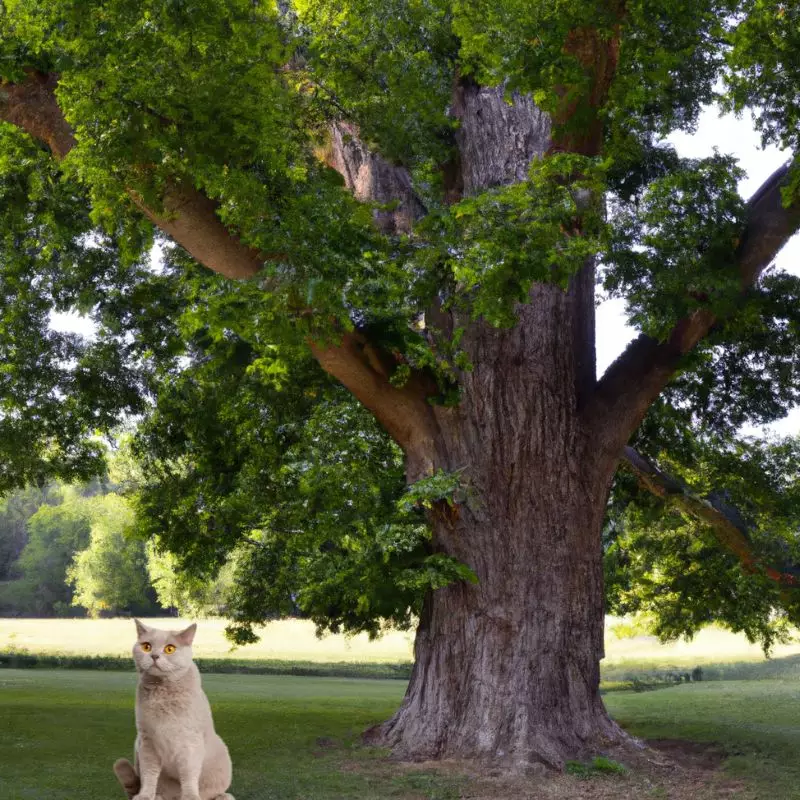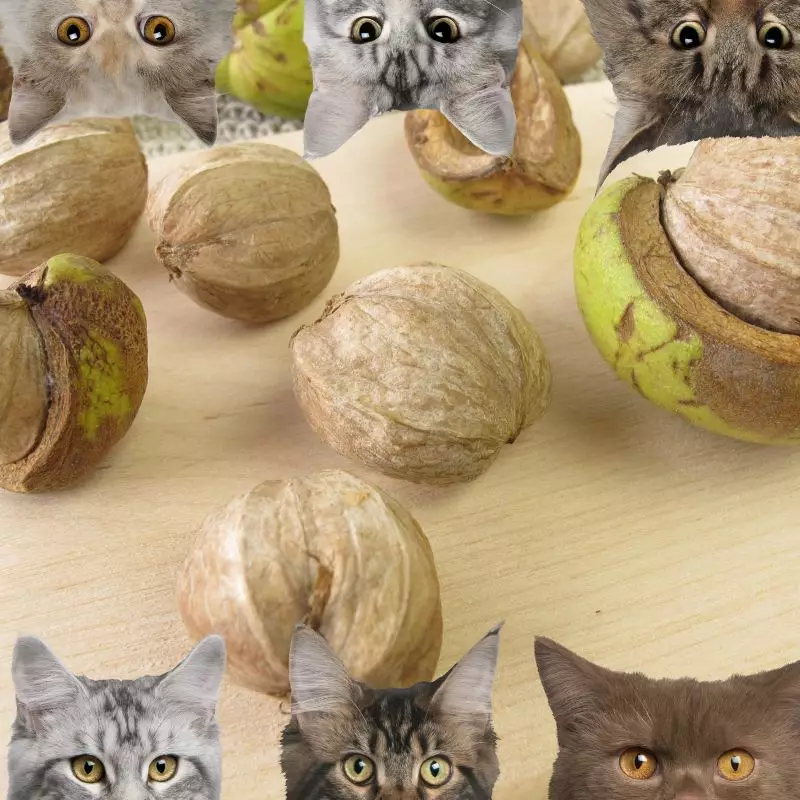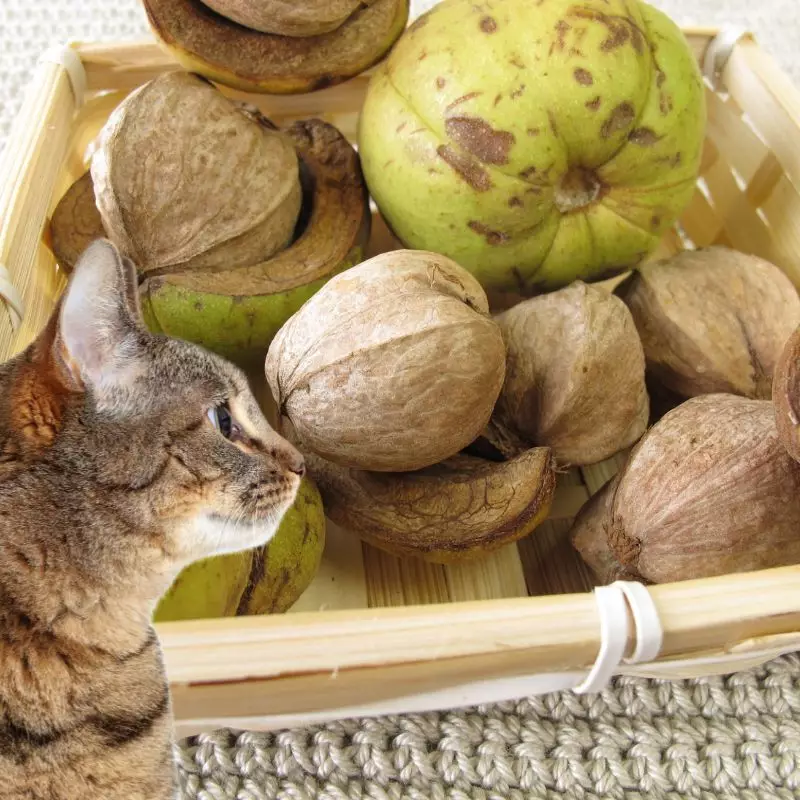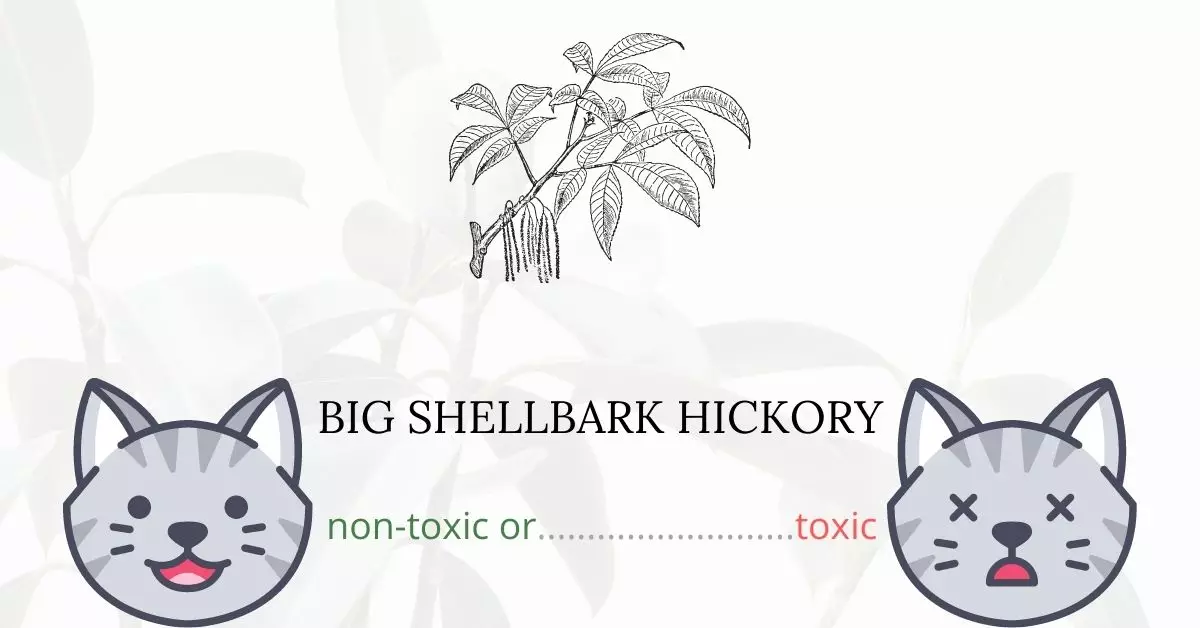No, the Big Shellbark Hickory is not toxic for cats. According to the American Society for the Prevention of Cruelty to Animals (ASPCA), this plant is classified as non-toxic, allowing cat owners to feel at ease even if their feline friend comes into contact with or consumes a part of the Big Shellbark Hickory.
This article is a product of collaborative efforts between our writers and a team of experienced DVMs (doctors of veterinary medicine). With their invaluable insights, we aim to deliver accurate and the most current information on the potential risks various plants, such as Big Shellbark Hickory, may pose to cats. Our research process also involved consulting high-authority websites, including ASPCA and PetMD, to ensure the reliability and comprehensiveness of the information provided on every plant discussed.
Can Cats Eat Big Shellbark Hickory?

Yes, cats can eat a part of big shellbark hickory. Eating a small portion of shellbark hickory should not cause you any worry.
However, eating any type of plant on a frequent basis may create gastrointestinal problems in cats. Because they are carnivorous by nature, their bodies lack the enzymes needed to digest plant nutrients. You should still prevent your cat from eating plants, especially outside.
What is Big Shellbark Hickory?

Big shellbark hickory is a slow-growing, long-lived tree that is difficult to transplant due to its lengthy taproot and susceptibility to insect damage. It produces the biggest of all hickory nuts; the nuts are delicious and tasty. The majority are harvested by wildlife and humans; those that remain rapidly generate seedling trees. The wood is robust, hefty, strong, and pliable, making it a popular choice for tool handles.
Kingnut, Shellbark hickory, and western shellbark are the other common names for big shellbark hickory. It is scientifically called Carya laciniosa from the Juglandaceae plant family. The big shellbark hickory is widespread but not common. This species is most common in the lower Ohio River valley and farther south along the Mississippi River to middle Arkansas.
Shellbark hickory thrives in deep, rich, wet soils, such as those found in the Alfisol order. It grows well in heavy loams or silt loams but not in thick clay soils.
Keeping Cats Away From Big Shellbark Hickory

Outdoor cats are more likely to encounter big shellbark hickory and other plants that can be potentially toxic or not.
It is helpful to keep your cats nourished and occupied indoors as a general safety precaution. This decreases the possibility that they may leave and devour plants out of hunger or boredom.
You can also restrict their access outdoors and keep them indoors as much as possible so you can keep an eye on them.
Plants to Avoid For Your Cats
If you are a cat owner and unsure if the plants growing in your yard are harmful to your cats, check out this list of toxic plants for cats. You can also check our list of non-toxic plants for cats.





